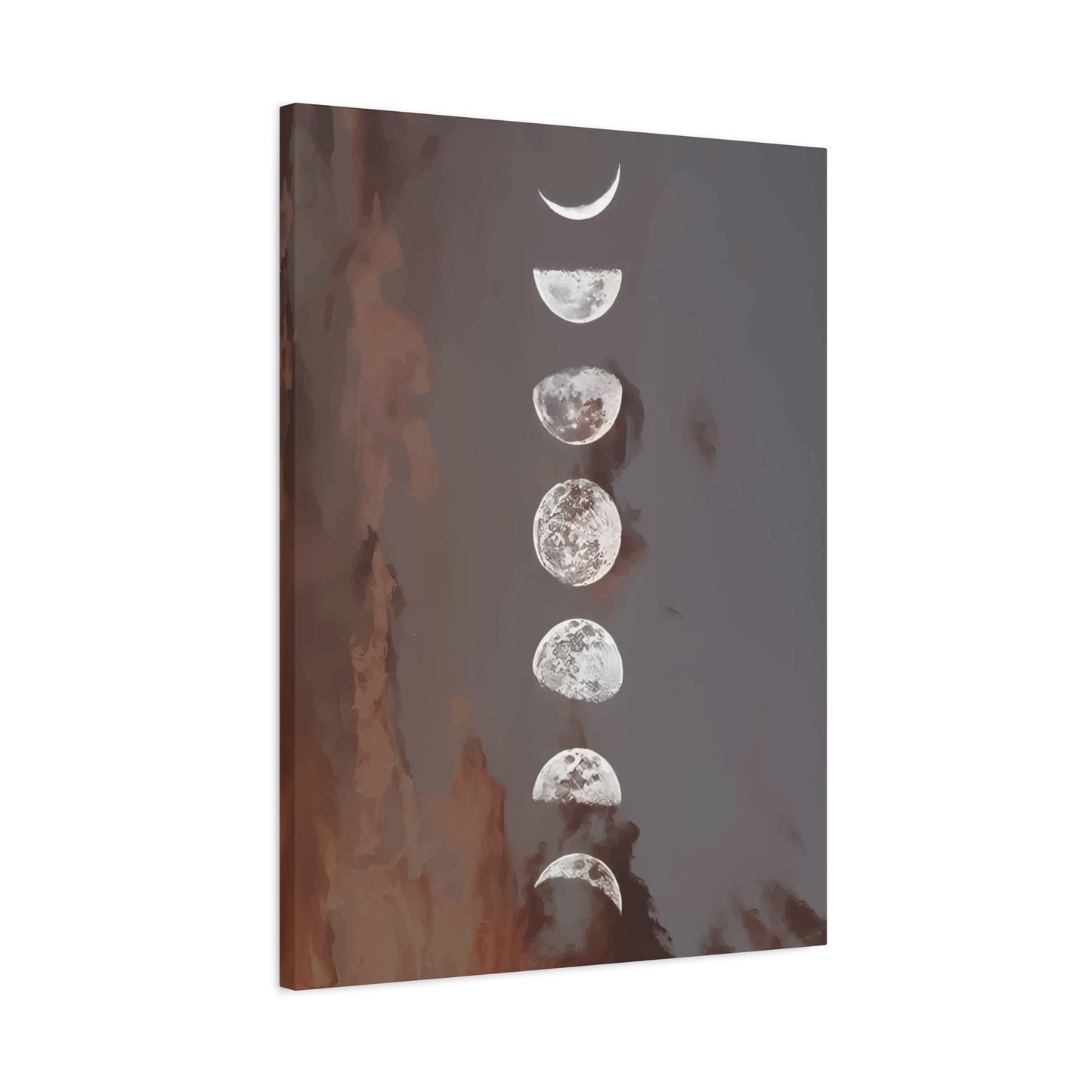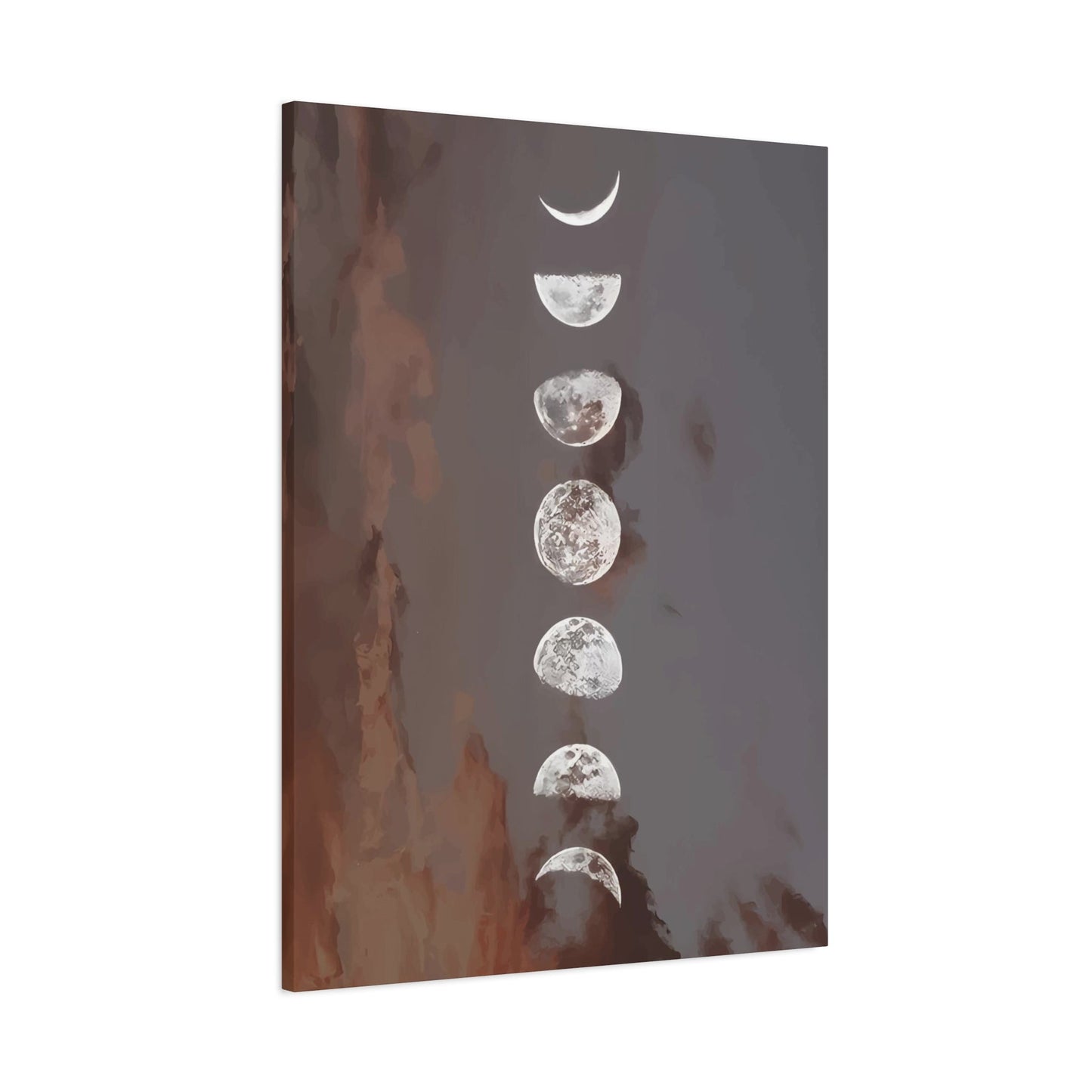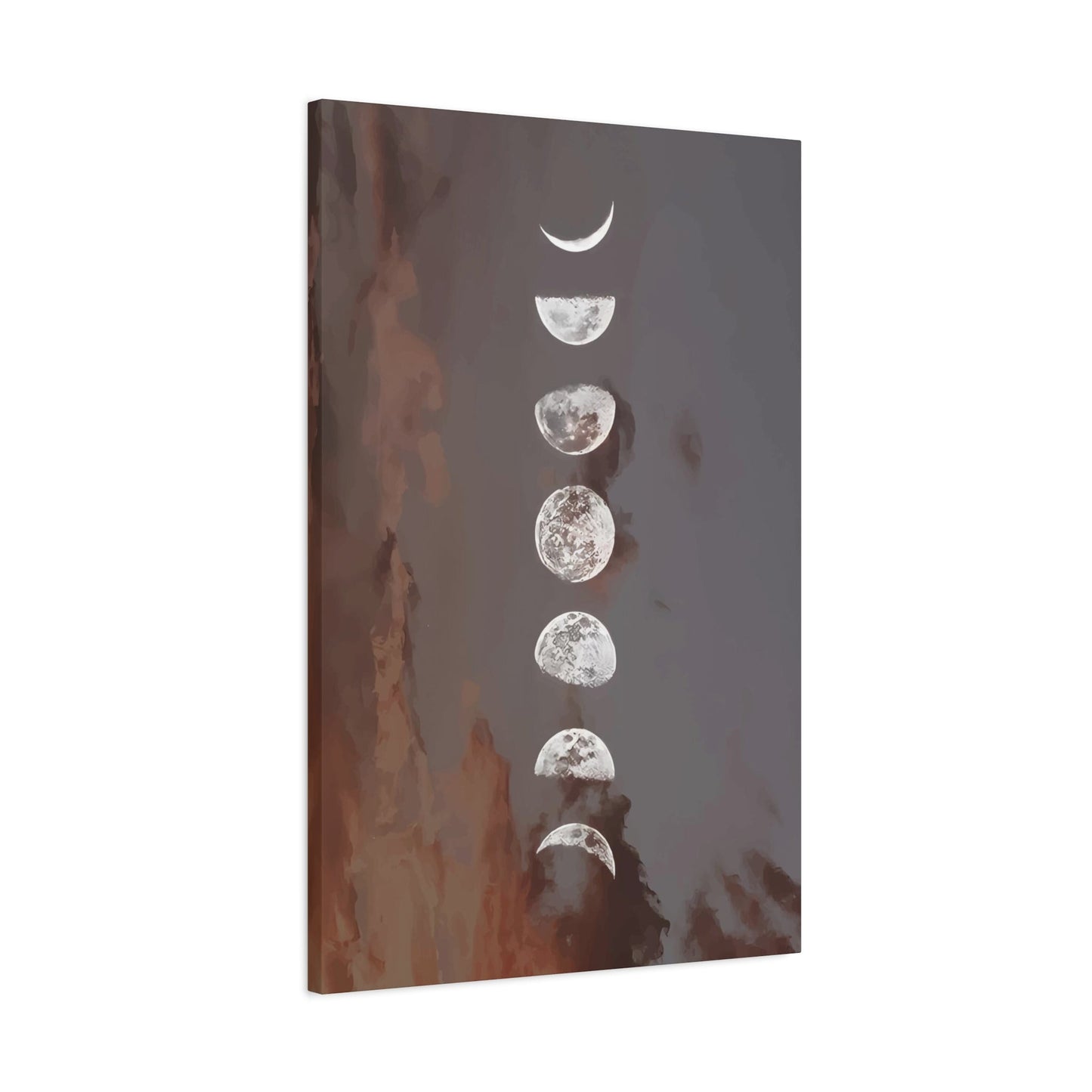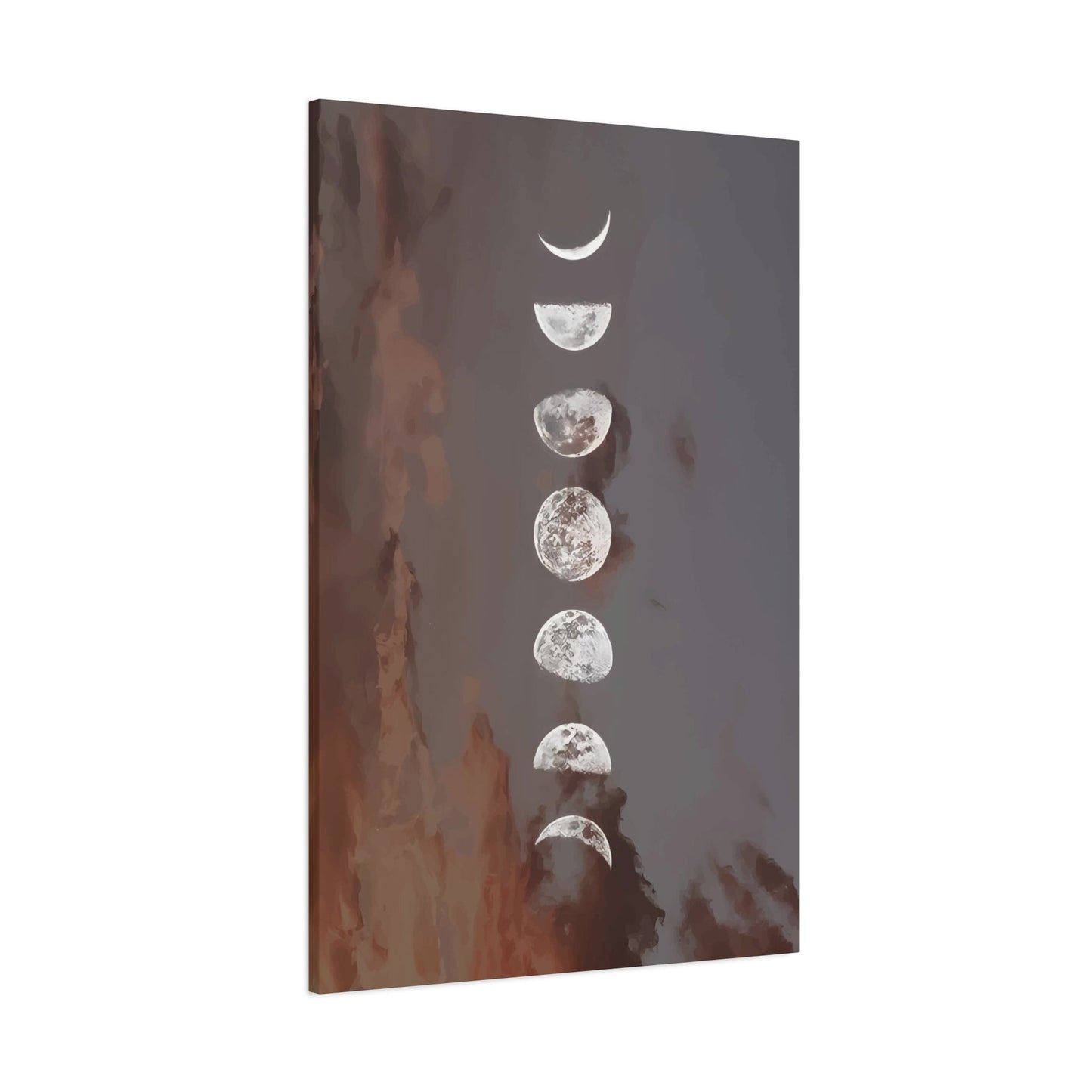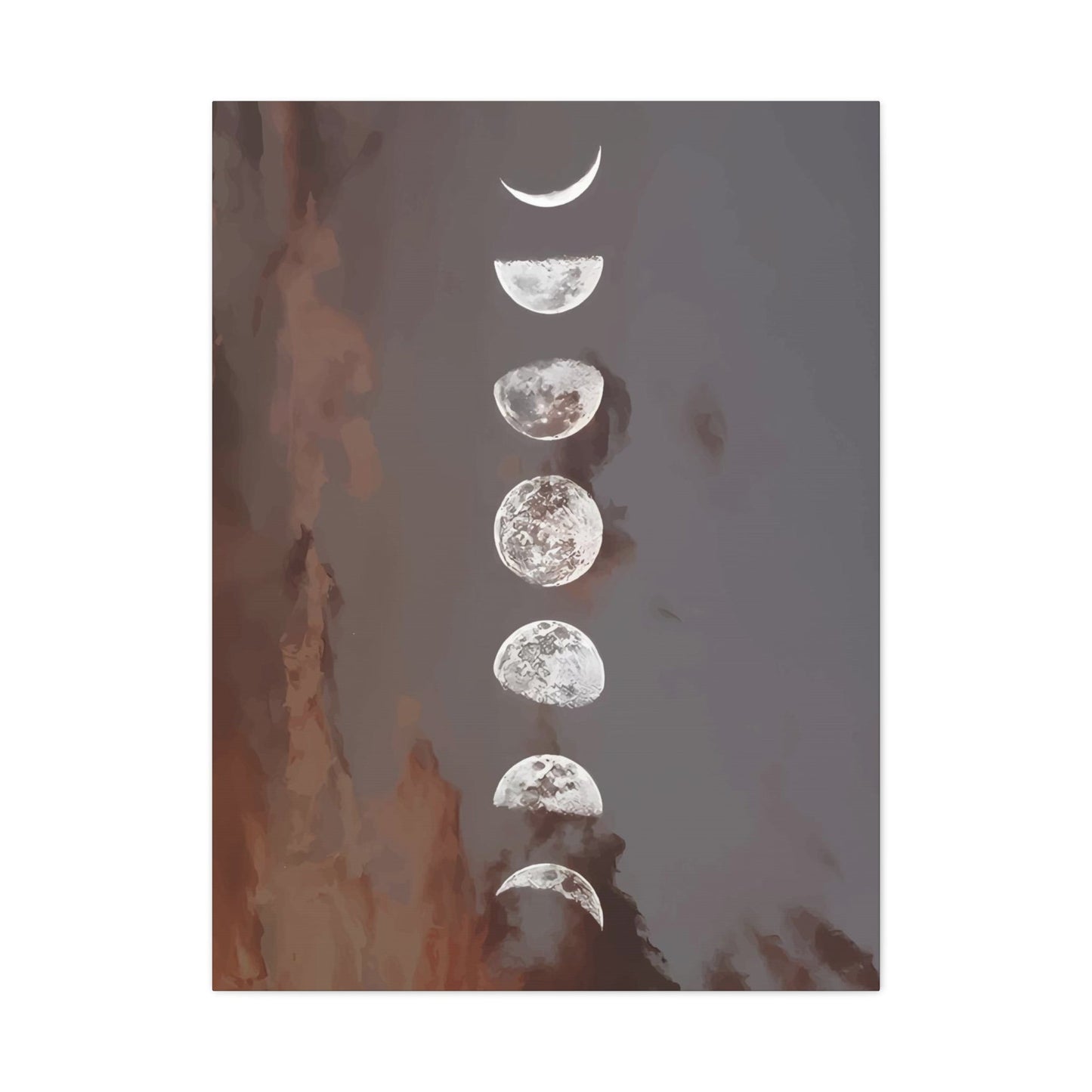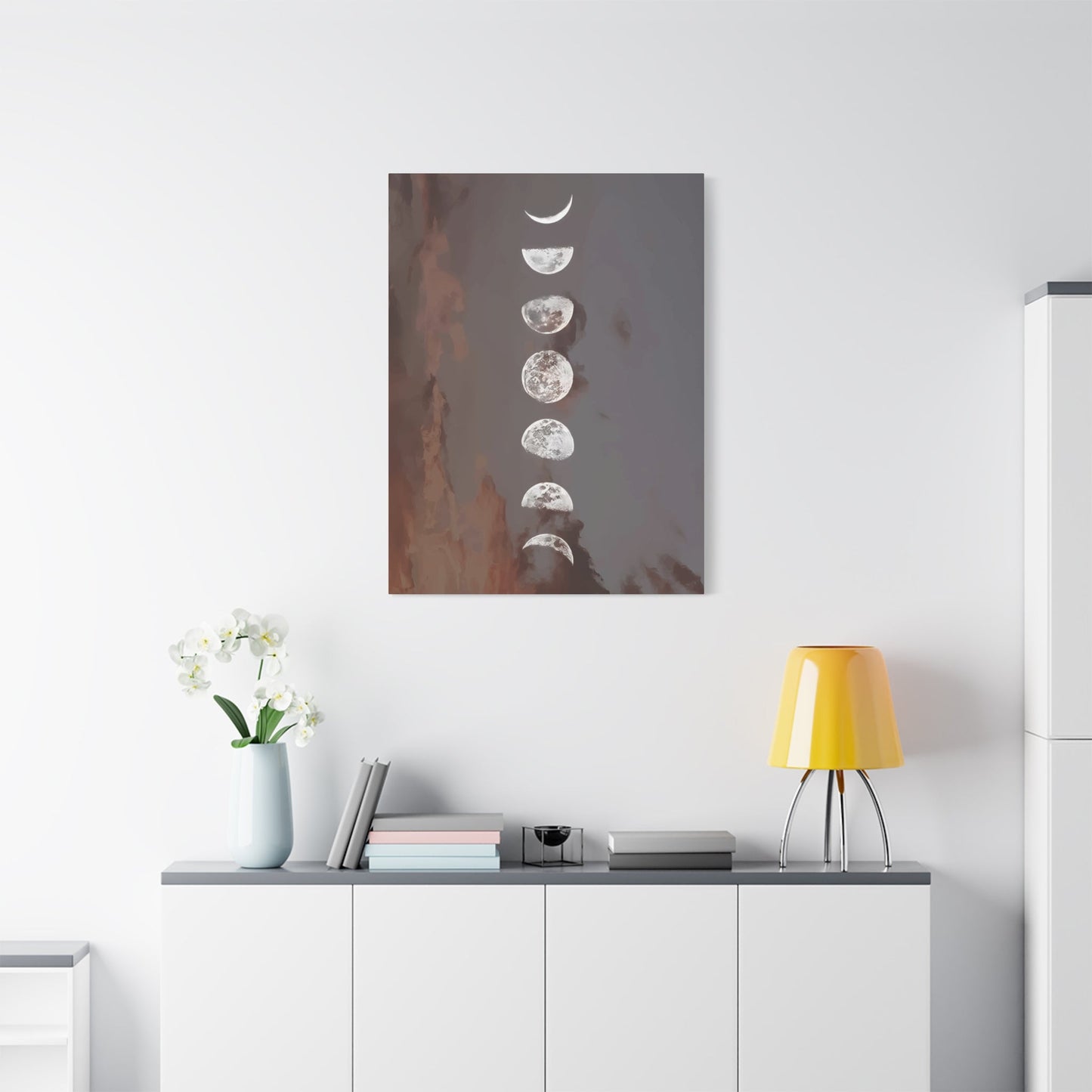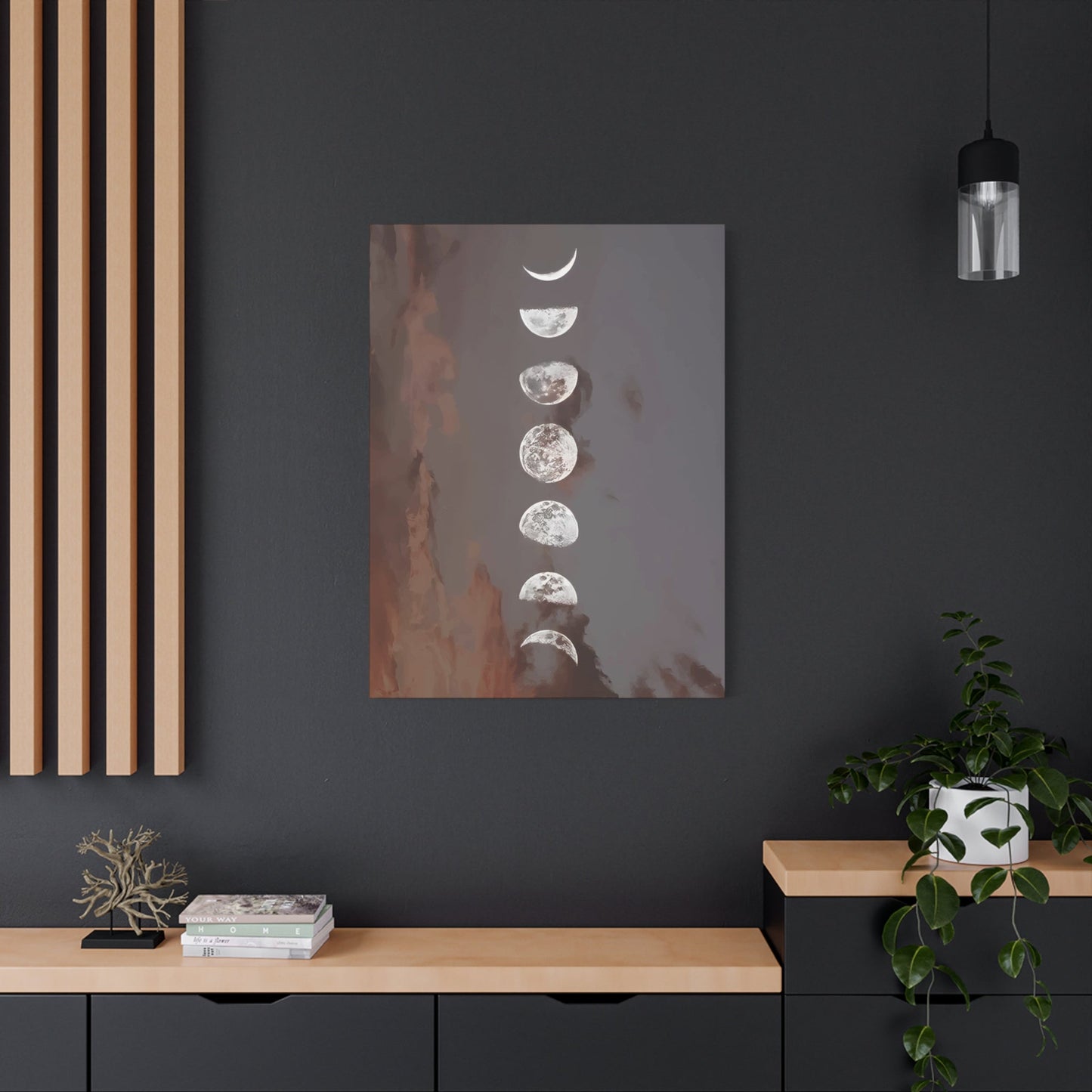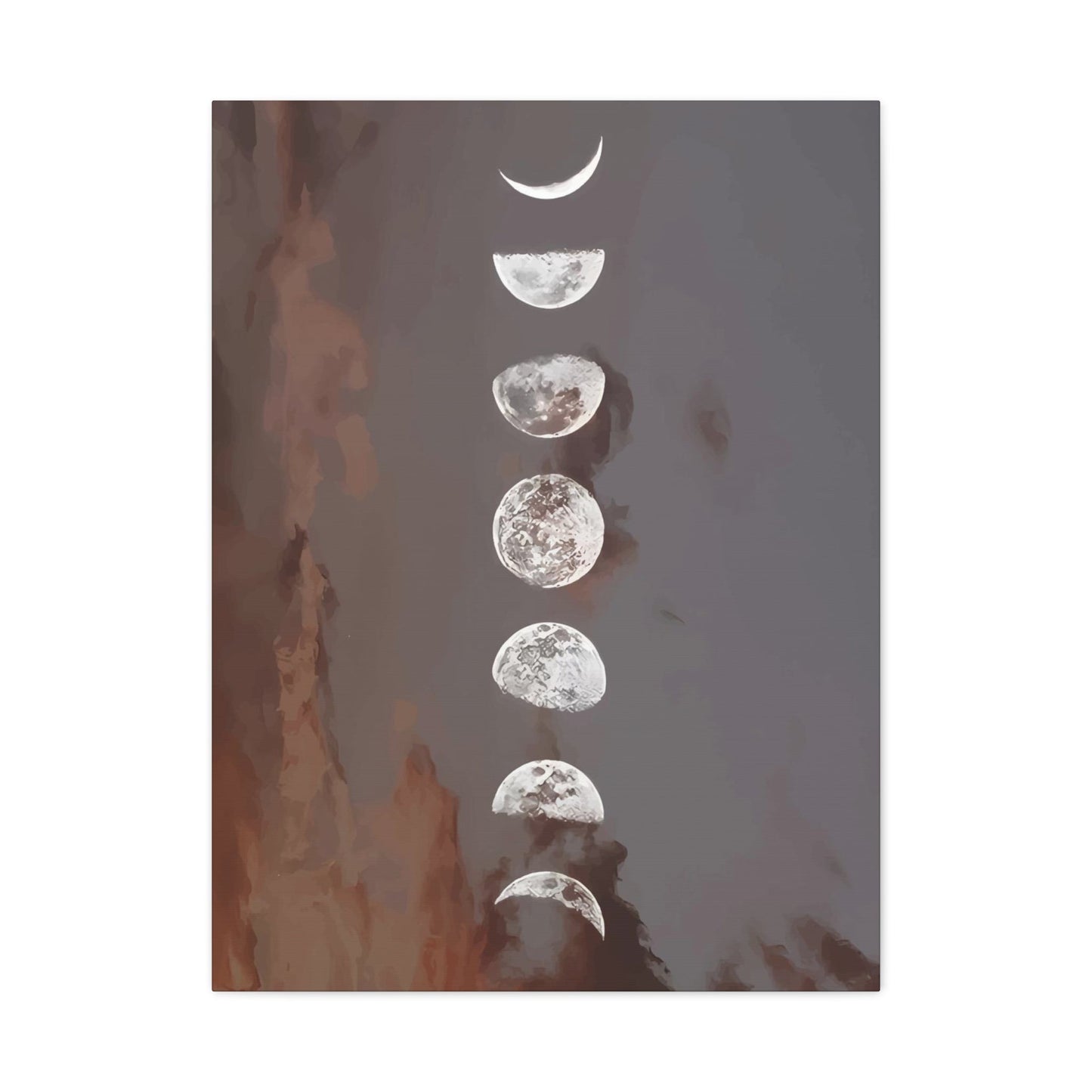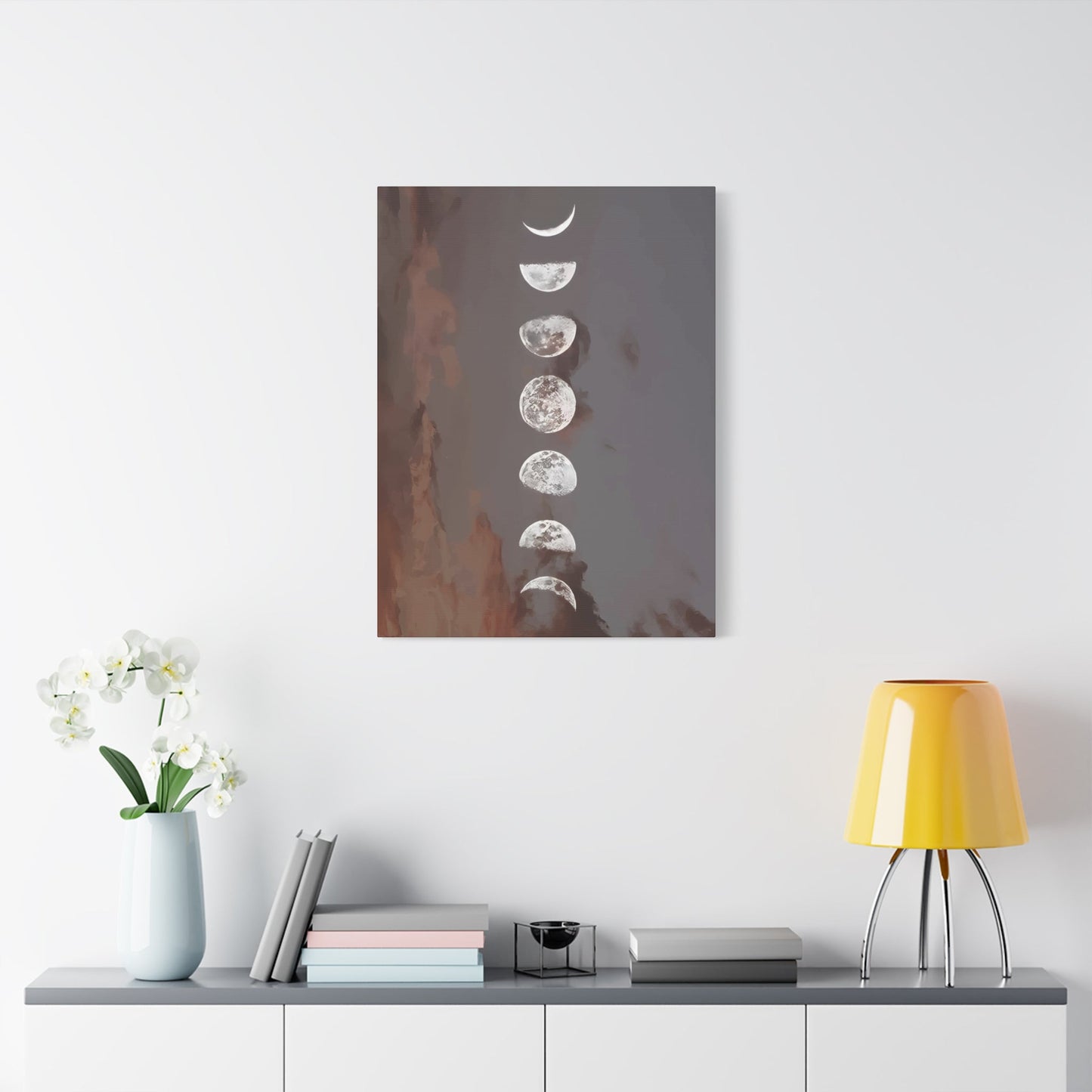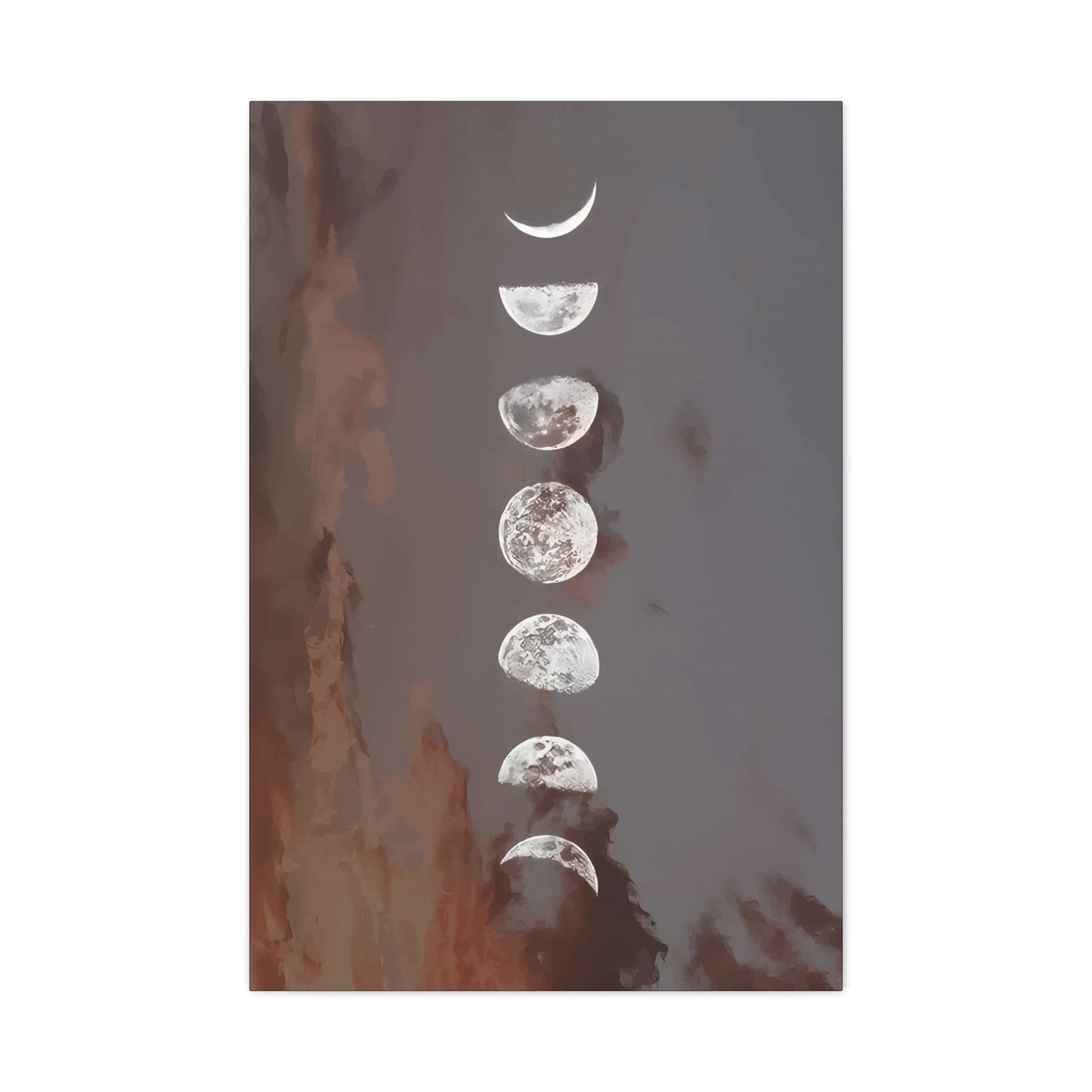Celestial Beauty: Moon Phase Wall Art for Modern Living Environments
Moon phase wall art has emerged as one of the most captivating trends in contemporary home decoration, offering a perfect blend of scientific fascination and aesthetic appeal. These celestial-inspired pieces have transformed countless living environments, bringing the mystique of lunar cycles directly into our daily lives. The growing popularity of phases-of-moon artwork reflects our deep-rooted connection to natural rhythms and our desire to incorporate meaningful symbolism into our personal environments.
The allure of moon phase wall art extends far beyond simple decoration. These pieces serve as daily reminders of the constant cycles of change and renewal that govern our natural world. Whether displayed as a series of prints showing the complete lunar cycle or as individual pieces highlighting specific phases, this artwork creates a sense of harmony and balance that resonates with viewers on multiple levels.
From minimalist black and white designs to elaborate metallic compositions, moon phase wall art offers endless possibilities for creative expression. The versatility of this theme allows artists and designers to explore various styles, materials, and interpretations while maintaining the timeless appeal of lunar imagery. This comprehensive exploration will delve into every aspect of incorporating these celestial masterpieces into your living environment, from understanding the scientific foundations to mastering the art of display and placement.
Incorporating Lunar Cycles into Your Living Environment Design
The integration of lunar cycles into living environment aesthetics represents a profound shift toward nature-inspired design philosophies that honor celestial rhythms. When incorporating moon phase wall art into your home, you're essentially bringing the cosmic dance of our nearest celestial neighbor into your daily environment. This approach to decoration goes beyond mere visual appeal, creating a deeper connection between your living environment and the natural world that surrounds us.
Understanding the symbolic significance of each lunar phase can greatly enhance your decorating decisions. The new moon represents new beginnings and fresh starts, making it perfect for entryways or areas dedicated to planning and goal-setting. The waxing crescent symbolizes growth and intention, ideal for creative workspaces or study areas. The first quarter moon embodies decision-making and action, suitable for home offices or meeting areas. The waxing gibbous represents refinement and adjustment, perfect for areas where you engage in detailed work or reflection.
The full moon, perhaps the most dramatic and recognizable phase, symbolizes culmination, celebration, and peak energy. This makes full moon imagery particularly powerful in social areas like living rooms or dining areas where family and friends gather. The waning gibbous represents gratitude and sharing wisdom, making it appropriate for libraries or mentorship areas. The third quarter moon symbolizes forgiveness and letting go, suitable for bedrooms or meditation areas. Finally, the waning crescent represents surrender and rest, perfect for relaxation zones or recovery areas.
Creating a cohesive lunar-inspired environment involves more than simply hanging moon phase artwork on walls. Consider how lighting plays a role in your lunar theme. Soft, warm lighting can mimic the gentle glow of moonlight, while adjustable lighting systems can help you recreate different atmospheric conditions throughout the day. Incorporate materials that reflect the moon's surface textures, such as rough-hewn stone, metallic finishes, or textured fabrics that catch and reflect light in interesting ways.
Color palettes inspired by lunar cycles can range from monochromatic schemes featuring various shades of grey, silver, and white to more complex combinations that incorporate the deep blues of night sky or the warm golds of moonrise. The key is to maintain consistency while allowing for subtle variations that keep the eye engaged and interested.
The Science Behind Moon Phases and Their Artistic Depiction
The artistic representation of lunar phases finds its foundation in centuries of astronomical observation and scientific understanding. The moon's changing appearance throughout its 29.5-day cycle has fascinated humanity since ancient times, leading to detailed documentation of each phase and its characteristics. This scientific foundation provides artists with accurate references for creating authentic and meaningful moon phase wall art that educates while it decorates.
The lunar cycle begins with the new moon, when the moon appears completely dark from Earth's perspective. This occurs because the moon is positioned between Earth and the Sun, with its illuminated side facing away from us. Artists often represent this phase as either a completely black circle or as a thin outline suggesting the moon's presence without visible illumination. The subtle beauty of this phase lies in its suggestion of potential and hidden energy.
As the moon moves in its orbit, we begin to see the waxing crescent phase, where a thin sliver of light appears on the right side of the moon's face as viewed from the Northern Hemisphere. This delicate curve has inspired countless artistic interpretations, from minimalist line drawings to elaborate relief sculptures. The scientific accuracy of these depictions depends on understanding the exact angle and position of the moon relative to both Earth and the Sun.
The first quarter moon presents a perfect half-circle of illumination, creating a striking visual that has become iconic in moon phase art. The sharp demarcation between light and shadow on the lunar surface provides artists with dramatic contrast opportunities while maintaining scientific accuracy. Understanding the geography of the moon's surface, including major craters and maria (dark plains), allows artists to create more detailed and accurate representations of this phase.
The waxing gibbous phase shows more than half of the moon illuminated but not yet full, creating an egg-shaped appearance that challenges artists to capture the subtle curves and gradations of light across the lunar surface. Scientific accuracy in depicting this phase requires understanding how Earth's shadow affects our perception of the moon's illumination and how atmospheric conditions can influence the visibility of surface features.
The full moon represents the culmination of the lunar cycle, with the entire visible face of the moon illuminated by direct sunlight. Artists working with full moon imagery have the opportunity to showcase the moon's surface features in full detail, from the prominent craters formed by ancient meteor impacts to the smoother areas created by ancient volcanic activity. The scientific study of lunar topography provides endless inspiration for artists seeking to create accurate and compelling full moon representations.
The waning phases mirror their waxing counterparts but in reverse, as the moon appears to shrink night by night. The waning gibbous, third quarter, and waning crescent phases each present unique artistic challenges and opportunities. Understanding the scientific principles behind these phases helps artists create more authentic representations while exploring creative interpretations that maintain astronomical accuracy.
Modern space exploration has provided artists with unprecedented detail about the moon's surface, including high-resolution photographs that reveal texture, color variations, and previously unknown features. This scientific data has revolutionized moon phase art, allowing for incredibly detailed and accurate representations that would have been impossible for earlier generations of artists to achieve.
Moon Phase Wall Art as a Gift Idea
The universal appeal of celestial themes makes moon phase wall art an exceptional gift choice for a wide variety of recipients and occasions. Unlike many decorative items that require intimate knowledge of someone's personal style or color preferences, moon phase artwork transcends individual tastes while maintaining deep personal meaning. The symbolic nature of lunar cycles resonates with people from all walks of life, making these pieces thoughtful and meaningful gifts that recipients will treasure for years to come.
For astrology enthusiasts, moon phase wall art represents a perfect intersection of scientific accuracy and spiritual significance. These individuals often have a deep appreciation for the moon's influence on human behavior and natural cycles, making accurate and beautiful representations of lunar phases particularly meaningful. Consider gifting a complete set showing all eight major phases, allowing the recipient to display the entire cycle and appreciate the full beauty of lunar transformation.
New homeowners represent another ideal recipient group for moon phase wall art gifts. Moving into a new living environment often involves establishing fresh energy and setting new intentions, making the symbolism of lunar cycles particularly appropriate. A beautiful moon phase series can serve as both decoration and a daily reminder of the natural cycles that govern renewal and growth. The timeless nature of celestial themes ensures that these gifts will remain relevant and beautiful regardless of changing decorating trends.
Yoga practitioners and meditation enthusiasts often incorporate lunar awareness into their spiritual practices, making moon phase wall art both aesthetically pleasing and practically meaningful. These individuals frequently use lunar cycles to guide their practice intensity and focus, making accurate phase representations valuable tools for their spiritual development. Consider selecting pieces that emphasize the peaceful, contemplative aspects of lunar imagery.
Students and academics, particularly those studying astronomy, earth sciences, or related fields, will appreciate the educational value of scientifically accurate moon phase artwork. These pieces can serve as both study aids and decorative elements, creating inspiring environments that support learning and curiosity. Look for artwork that includes subtle educational elements, such as phase names or orbital position indicators.
Artists and creative professionals often draw inspiration from natural cycles and celestial phenomena, making moon phase wall art particularly appreciated gifts within creative communities. These individuals understand the artistic challenges involved in accurately depicting lunar phases while creating visually compelling compositions. Consider selecting pieces that showcase innovative artistic techniques or unique interpretations of traditional lunar themes.
Wedding gifts present special opportunities for moon phase artwork, particularly when you know the couple's wedding date and can select pieces that correspond to the lunar phase on their special day. This personalization adds deep meaning to the gift while creating a lasting reminder of their wedding celebration. Many artists offer custom pieces that can incorporate specific dates and corresponding moon phases.
The presentation of moon phase wall art gifts deserves special consideration to maximize their impact and meaning. Consider creating a gift package that includes information about the lunar cycle, the symbolic meaning of different phases, or even a lunar calendar for the coming year. This additional context helps recipients appreciate both the artistic and scientific aspects of their gift while providing ongoing engagement with the lunar theme.
Using Metallic Accents in Moon Phase Art
The incorporation of metallic elements in moon phase wall art creates stunning visual effects that capture the ethereal quality of moonlight while adding sophisticated elegance to any environment. Metallic accents serve multiple purposes in lunar-themed artwork, from accurately representing the reflective nature of the moon's surface to creating dramatic contrast against darker backgrounds. Understanding how different metals interact with light and how they age over time helps in selecting pieces that will maintain their beauty and impact for years to come.
Silver represents the most natural choice for moon phase artwork, as it closely matches the cool, reflective quality of actual moonlight. Silver leaf applications, metallic paints, and brushed silver frames all contribute to creating authentic lunar representations. The cool undertones of silver complement both warm and cool color schemes, making silver-accented moon phase art versatile enough for various decorating styles. Real silver applications develop a natural patina over time, adding character and depth to the artwork while maintaining their essential beauty.
Gold accents in moon phase art create dramatic warmth and luxury that can transform the entire feeling of a room. While less scientifically accurate than silver, gold represents the moon's appearance during harvest season or when viewed through atmospheric conditions that warm its color. Gold leaf details, bronze finishes, and brass elements all contribute to creating rich, warm lunar representations that work particularly well in traditional or eclectic decorating schemes.
Copper applications offer a unique middle ground between silver and gold, providing warmth without the intensity of gold while maintaining some of the cool qualities associated with silver. Copper naturally develops a distinctive patina over time, creating ever-changing visual effects that mirror the cyclical nature of lunar phases themselves. This natural aging process makes copper-accented moon phase art particularly appealing to those who appreciate the beauty of natural processes and change.
The technique of layering different metallic finishes within a single piece creates complex visual effects that change depending on viewing angle and lighting conditions. This approach allows artists to create moon phase representations that appear to shift and change throughout the day, mimicking the actual behavior of moonlight as it interacts with our atmosphere and environment. These dynamic qualities make metallic-accented pieces particularly engaging and suitable for areas where they will be viewed under various lighting conditions.
Textural applications of metallic elements add dimensional quality to moon phase art that enhances the three-dimensional appearance of the lunar surface. Techniques such as hammered metal inserts, embossed metallic papers, or applied metal leaf over textured surfaces create tactile interest while maintaining the visual appeal of metallic finishes. These textural elements invite closer inspection and create more intimate relationships between viewers and the artwork.
The placement of metallic accents within moon phase compositions requires careful consideration of both artistic balance and symbolic meaning. Highlighting the illuminated portions of lunar phases with metallic elements creates natural emphasis while maintaining scientific accuracy. However, subtle metallic details in shadow areas can suggest the moon's presence even in its darkest phases, creating more complete and engaging compositions.
Contemporary metallic techniques, including iridescent finishes and color-changing metallics, offer new possibilities for moon phase art that weren't available to earlier generations of artists. These modern materials can create effects that shift between different metallic tones depending on viewing angle, mimicking the complex light interactions that occur in our atmosphere when viewing the actual moon.
Popular Colors in Phases-of-Moon Wall Art
The color palette choices in moon phase wall art significantly impact both the aesthetic appeal and symbolic meaning of these celestial representations. While traditional approaches often emphasize monochromatic schemes that mirror the actual appearance of the moon, contemporary artists have expanded the possibilities to include rich, complex color relationships that enhance the emotional and spiritual impact of lunar imagery. Understanding how different colors interact with lunar themes helps in selecting pieces that will create the desired atmosphere and meaning within your living environment.
Monochromatic grey schemes represent the most scientifically accurate approach to moon phase coloration, reflecting the actual mineral composition and surface characteristics of the lunar landscape. These subtle color variations, ranging from deep charcoal to pale silver-grey, create sophisticated and timeless artwork that integrates seamlessly into virtually any decorating scheme. The challenge for artists working in monochromatic palettes lies in creating visual interest and emotional impact through texture, contrast, and composition rather than relying on color variety.
Deep blue backgrounds have become increasingly popular in moon phase art, as they effectively represent the night sky while providing dramatic contrast for lunar imagery. The range of possible blues extends from midnight navy through royal blue to lighter celestial shades that suggest dawn or dusk. These blue backgrounds often incorporate subtle variations and gradations that suggest atmospheric conditions, cloud formations, or the infinite depth of outer atmosphere.
Warm color palettes, incorporating golds, ambers, and deep oranges, create moon phase art that suggests harvest moons, lunar eclipses, or atmospheric conditions that warm the moon's appearance. These warmer interpretations often carry stronger emotional content, suggesting comfort, abundance, and earthly connection. The challenge with warm palettes lies in maintaining the otherworldly quality that makes lunar imagery so compelling while incorporating colors that feel grounded and accessible.
Purple and violet tones in moon phase art create mysterious, spiritual atmospheres that appeal particularly to those interested in astrology, meditation, and metaphysical practices. These colors suggest the liminal quality of twilight hours when the moon is most visible, creating artwork that feels both grounded in natural observation and open to spiritual interpretation. Purple backgrounds can range from deep eggplant tones to lighter lavender shades, each creating different emotional responses.
Black backgrounds provide the most dramatic contrast for moon phase artwork, creating striking visual impact while accurately representing the darkness of outer surroundings. Pure black backgrounds make lunar phases appear to float in infinite depth, creating almost mystical visual effects. However, working with true black requires careful attention to lighting and placement, as these pieces can appear to disappear in poorly lit areas while creating stunning focal points in well-lit environments.
Gradient color schemes that transition from one hue to another create dynamic backgrounds that suggest movement, time passage, or atmospheric changes. These gradual color shifts can represent the progression from day to night, the changing seasons that affect moon visibility, or the emotional journey that many associate with lunar cycles. Creating effective gradients requires technical skill and artistic sensitivity to ensure that the transitions feel natural and support rather than compete with the lunar imagery.
Contemporary artists have also explored unexpected color combinations in moon phase art, including vibrant teals, coral pinks, and sage greens that create unique and personal interpretations of lunar themes. These non-traditional approaches can be particularly effective in modern or eclectic decorating schemes where unexpected color combinations create visual interest and conversation starters.
The psychology of color plays an important role in the emotional impact of moon phase wall art. Cool colors tend to create calming, meditative effects that support relaxation and contemplation, while warmer colors generate energy and comfort that can make rooms feel more inviting and active. Understanding these psychological effects helps in selecting moon phase art that will create the desired emotional atmosphere in different areas of your home.
Moon Phase Art for Yoga and Wellness Rooms
The incorporation of moon phase wall art into yoga and wellness environments creates powerful connections between celestial rhythms and personal healing practices. These dedicated rooms require artwork that supports meditation, encourages introspection, and promotes the peaceful mindset essential for effective wellness activities. Moon phase imagery provides all of these qualities while adding visual beauty that enhances rather than distracts from spiritual and physical practices.
The cyclical nature of lunar phases resonates deeply with yoga philosophy, which emphasizes the importance of natural rhythms and cycles in personal development. Different lunar phases can represent various stages of personal growth, from the introspective energy of the new moon through the active manifestation of the full moon to the releasing energy of the waning phases. Displaying the complete lunar cycle in a yoga room provides practitioners with visual reminders of these natural rhythms and their relevance to personal practice.
Positioning moon phase art in yoga and wellness rooms requires careful consideration of sightlines and meditation positions. Artwork should be placed where it can be seen during various yoga poses and meditation positions without creating distractions or neck strain. Many practitioners prefer moon phase art positioned at eye level when seated in meditation position, allowing for easy visual reference during contemplative practices.
The size and scale of moon phase art in wellness environments should promote tranquility rather than overwhelming the senses. Medium-sized pieces or series of smaller coordinated pieces often work better than large, dominant artworks that might compete with the peaceful atmosphere essential for effective practice. The goal is to create subtle visual anchors that support rather than dominate the wellness environment.
Color choices for moon phase art in yoga and wellness rooms typically emphasize calming, neutral tones that promote relaxation and focus. Soft greys, muted blues, and gentle earth tones create peaceful atmospheres that support meditation and contemplation. Avoiding overly bright or contrasting colors helps maintain the serene environment necessary for effective wellness practices.
The symbolic associations of different moon phases can be strategically used to support specific types of wellness activities. New moon imagery supports intention-setting and new beginning practices, making it ideal for areas dedicated to goal-setting or planning sessions. Full moon representations support peak energy activities and celebrations of achievement, perfect for areas where practitioners acknowledge their progress and accomplishments.
Lighting considerations become particularly important when displaying moon phase art in wellness environments. The artwork should be visible in the dim lighting often preferred for meditation and relaxation activities while not creating glare or harsh reflections that might disturb practice. Soft, indirect lighting that illuminates the artwork without creating dramatic shadows or bright spots helps maintain the peaceful atmosphere essential for wellness activities.
The materials and framing of moon phase art in wellness rooms should align with the natural, peaceful aesthetic typically desired in these environments. Natural wood frames, simple metal borders, or frameless mounting options often work better than ornate or distracting frame styles. The goal is to let the lunar imagery speak for itself while maintaining the clean, uncluttered appearance that supports meditative practices.
Many yoga practitioners appreciate moon phase art that includes subtle educational elements, such as phase names or brief symbolic interpretations. These additions can support learning about lunar cycles and their traditional associations with personal development, adding intellectual engagement to the visual experience without overwhelming the peaceful atmosphere of the wellness environment.
Combining Moon Phase Art with Star and Constellation Themes
The integration of moon phase artwork with broader celestial themes creates comprehensive cosmic environments that celebrate humanity's relationship with the night sky. This approach allows for more complex and layered decorating schemes while maintaining cohesive visual unity through shared astronomical themes. Understanding how different celestial elements work together helps create sophisticated and engaging environments that tell complete stories about our cosmic neighborhood.
Star maps and constellation charts provide natural companions for moon phase art, as they represent the broader stellar environment in which lunar phases occur. Historical star charts, with their intricate line work and classical styling, create elegant backdrops for moon phase sequences while adding educational and historical depth to celestial displays. Contemporary star maps, including personalized versions that show the night sky on specific dates, can create deeply personal celestial environments.
The scale relationships between lunar and stellar artwork require careful consideration to maintain realistic proportions and visual harmony. The moon appears much larger in our night sky than individual stars, so moon phase art typically should be given visual prominence while star and constellation elements provide context and background interest. This hierarchical approach creates more natural and visually pleasing arrangements.
Planetary imagery can extend celestial themes beyond earth's immediate cosmic neighborhood while maintaining the scientific accuracy that makes astronomical art so compelling. Representations of Mars, Jupiter, Saturn, and other visible planets can create more comprehensive solar system displays that place lunar phases in their proper cosmic context. Understanding the relative sizes, colors, and characteristics of different planets helps create accurate and engaging multi-planetary displays.
Galaxy and nebula imagery introduces color and dynamism to celestial displays while representing the larger cosmic structures that contain our solar system. The rich colors and flowing forms typical of nebula photography provide beautiful contrast to the more geometric and monochromatic qualities of moon phase art. These combinations can create displays that range from scientifically educational to purely aesthetic, depending on the specific pieces chosen and their arrangement.
Seasonal constellation themes allow for rotating displays that change throughout the year, keeping celestial artwork fresh and engaging while teaching about the earth's orbital motion around the sun. Spring constellations like Leo and Virgo, summer features like Scorpius and Sagittarius, autumn displays including Pegasus and Andromeda, and winter showcases featuring Orion and Gemini can provide year-round variety while maintaining consistent celestial themes.
The mythology and cultural stories associated with constellations add narrative depth to celestial displays that can make them more engaging and memorable. Many constellations have rich histories of cultural interpretation, from Greek and Roman mythology to Native American traditions and contemporary astronomical discoveries. Incorporating these stories through artwork selection or accompanying text can create more meaningful and educational displays.
Lighting design becomes particularly important when combining multiple celestial elements, as different types of astronomical artwork may require different illumination approaches. Star charts often benefit from even, documentary-style lighting that makes details easily readable, while moon phase art might be more dramatically lit to emphasize the three-dimensional qualities of lunar surfaces. Coordinating these different lighting needs while maintaining overall environmental harmony requires careful planning and possibly adjustable lighting systems.
The temporal aspects of celestial displays offer opportunities to create dynamic, changing environments that reflect the actual movement of celestial objects. Time-lapse photography of star trails, rotating displays of seasonal constellations, or adjustable lighting that mimics lunar phases can create living astronomical displays that change over time, maintaining viewer interest while demonstrating cosmic principles.
The Role of Phases-of-Moon Art in Astrology
The intersection of moon phase artwork with astrological practice creates meaningful environments that support both spiritual development and aesthetic appreciation. For practitioners of astrology, the moon's phases represent powerful influences on human behavior, emotional states, and spiritual development, making accurate and beautiful lunar representations essential components of their living and working environments. Understanding how different phases relate to astrological principles helps create artwork selections that serve both decorative and practical purposes.
The new moon holds special significance in astrological practice as a time for setting intentions, beginning new projects, and focusing on internal development. Artwork representing this phase often emphasizes the potential energy contained in darkness, using subtle visual cues to suggest the moon's presence even when not visibly illuminated. New moon art in astrological environments often incorporates symbols or design elements that support intention-setting and new beginning rituals.
Waxing moon phases represent building energy, growth, and manifestation in astrological systems, making artwork depicting these phases particularly appropriate for areas dedicated to creative work, goal pursuit, and active manifestation practices. The visual representation of increasing illumination serves as a daily reminder of the building energy available during these lunar periods, encouraging practitioners to align their activities with these natural rhythms.
Full moon representations hold paramount importance in astrological environments, as this lunar phase is associated with peak energy, culmination of efforts, and heightened spiritual awareness. Full moon artwork often receives prominent placement in astrological practitioners' environments, serving as focal points for meditation, ritual work, and celebration of achievements. The dramatic visual impact of full moon imagery supports the intensity and power associated with this lunar phase.
Waning moon phases represent release, letting go, and preparation for new cycles in astrological interpretation. Artwork depicting these phases often emphasizes the beauty of decrease and the wisdom of surrender, creating visual reminders of the importance of release in personal development. These pieces often receive placement in areas dedicated to reflection, forgiveness work, and preparation for new beginnings.
The zodiacal associations of lunar phases add another layer of complexity and meaning to astrological applications of moon phase art. Each new moon occurs in a different zodiacal sign throughout the year, creating opportunities for artwork that combines lunar phases with zodiacal symbolism. These combined representations can create more specific and personally meaningful displays for practitioners who follow detailed astrological systems.
Lunar eclipse imagery holds special power in astrological contexts, as these events are considered particularly significant for transformation and major life changes. Artwork depicting eclipses often emphasizes the dramatic interplay between light and shadow, earth and moon, creating powerful visual metaphors for the transformative processes that eclipses are believed to catalyze in human experience.
The timing of lunar phases relative to astrological events creates opportunities for dynamic displays that change in accordance with actual celestial movements. Some practitioners create adjustable displays or rotating artwork selections that correspond to current lunar phases, maintaining active engagement with ongoing celestial rhythms while keeping their environments aligned with contemporary astrological influences.
Color symbolism in astrological applications of moon phase art often incorporates additional layers of meaning beyond simple aesthetic considerations. Different astrological traditions associate specific colors with lunar phases, planetary influences, and elemental correspondences, creating opportunities for artwork selection that serves multiple symbolic purposes while maintaining visual appeal and environmental harmony.
The personal birth chart connections to lunar phases create opportunities for deeply personalized artwork selection that reflects individual astrological profiles. Understanding the lunar phase present at one's birth, along with the moon's position in the natal chart, can guide artwork selection that creates more personally meaningful and astrologically relevant environmental support.
Using Moon Phase Wall Art to Track Personal Growth
The cyclical nature of lunar phases provides powerful metaphors for personal development processes, making moon phase wall art valuable tools for visualizing and supporting individual growth journeys. Many people find that aligning personal reflection and goal-setting activities with lunar cycles creates more natural and sustainable approaches to self-improvement, while moon phase artwork serves as daily visual reminders of these ongoing processes.
The new moon phase represents perfect timing for beginning new personal development initiatives, making artwork depicting this phase particularly meaningful in areas dedicated to planning, goal-setting, and intention work. The visual emptiness of the new moon creates space for contemplating possibilities while the promise of coming illumination provides hope and motivation for growth efforts. Many people position new moon artwork in their planning areas or offices as reminders to regularly reassess goals and set new intentions.
Waxing crescent moon imagery supports the early stages of personal development work, when initial efforts are beginning to show results but persistence is still required to maintain momentum. The delicate curve of the waxing crescent serves as a visual reminder that small, consistent efforts gradually build into significant achievements. This phase artwork works particularly well in areas where people engage in skill development, habit formation, or other gradual improvement activities.
First quarter moon representations emphasize decision-making and overcoming obstacles, making them ideal for placement in areas where important choices are made or challenging work is undertaken. The distinct half-illuminated appearance of the first quarter moon creates visual metaphors for balance, decision points, and the need to choose directions in personal development. Many people find this imagery helpful during periods when they need to make significant life decisions or overcome particular challenges.
Waxing gibbous moon artwork represents the refinement phase of personal development, when initial efforts are showing clear progress but fine-tuning is needed to achieve desired outcomes. The nearly-full appearance of the waxing gibbous creates visual encouragement while acknowledging that final efforts are still needed to achieve completion. This imagery works well in areas dedicated to skill refinement, project completion, or final preparation activities.
Full moon imagery provides powerful symbols for celebrating achievements, acknowledging progress, and appreciating the culmination of development efforts. The complete illumination of the full moon creates dramatic visual impact that supports recognition and celebration of personal accomplishments. Many people use full moon artwork to mark completed goals, achieved milestones, or significant personal transformations.
The waning phases offer equally important support for personal growth through their emphasis on release, reflection, and preparation for new cycles. Waning gibbous moon artwork encourages sharing wisdom gained through personal development while waning crescent imagery supports letting go of patterns, beliefs, or behaviors that no longer serve personal growth objectives.
Creating personal moon phase displays that correspond to specific growth goals can provide customized environmental support for individual development processes. Some people create rotating displays that change with actual lunar phases, while others prefer static arrangements that represent their personal interpretation of how lunar cycles apply to their growth journey.
Journaling and reflection practices often benefit from coordination with lunar phases, making moon phase artwork valuable additions to areas dedicated to writing, contemplation, and personal processing. The visual presence of lunar phases can prompt regular reflection while providing symbolic frameworks for organizing thoughts and tracking progress over time.
The long-term perspective encouraged by lunar cycle awareness helps maintain patience and persistence in personal development work. Understanding that growth occurs in cycles, with periods of building energy followed by periods of release and rest, can help maintain motivation during challenging phases while preventing burnout during periods of high activity.
DIY Moon Phase Wall Art with Natural Materials
Creating handmade moon phase wall art using natural materials offers opportunities for personal expression while maintaining authentic connections to the natural world that lunar imagery represents. This approach allows for customization that perfectly matches individual decorating needs while providing the satisfaction of creating meaningful artwork with your own hands. Natural materials add texture, warmth, and organic authenticity that commercial pieces sometimes lack.
Wood serves as an excellent foundation material for DIY moon phase projects, offering natural beauty, workability, and symbolic connection to living natural systems. Different wood types provide varying colors, grain patterns, and working characteristics that can enhance lunar imagery. Light woods like pine, birch, or maple create subtle backgrounds that allow painted or carved lunar phases to stand out, while darker woods like walnut, cherry, or ebony provide dramatic contrast for lighter lunar elements.
Burning techniques, including wood burning and pyrography, allow for detailed lunar surface representation while maintaining the natural wood appearance. These methods can create remarkably detailed moon surface textures, crater patterns, and phase boundaries while preserving the organic characteristics that make wood so appealing. Safety considerations become important when using burning techniques, requiring proper ventilation, fire safety measures, and appropriate tools.
Stone and slate materials offer authentic connections to natural geological processes while providing excellent surfaces for lunar imagery. Different types of stone offer varying colors, textures, and working characteristics. Smooth river stones can be painted with lunar phases to create sets of tactile art objects, while flat slate pieces provide excellent surfaces for detailed lunar paintings or engravings.
Clay and ceramic approaches allow for three-dimensional lunar representations that can capture the actual curvature and surface textures of lunar phases. Working with clay provides opportunities to create relief sculptures that emphasize the dimensional qualities of lunar surface features while allowing for personal interpretation and artistic expression. Fired ceramics create permanent artworks that can withstand environmental conditions while maintaining their beauty over time.
Natural fiber techniques, including macrame, weaving, and textile arts, offer softer approaches to lunar phase art that integrate well with bohemian, natural, or textile-rich decorating schemes. These methods can create dimensional wall hangings that incorporate lunar phase imagery while adding textural interest and organic movement to wall displays.
Pressed flower and botanical techniques combine lunar themes with plant materials to create delicate, naturalistic artwork that celebrates both celestial and terrestrial natural beauty. These approaches work particularly well for people who appreciate botanical art, gardening, or herbalism, creating connections between lunar cycles and plant growth patterns.
Metal working techniques, including wire sculpture, hammered metal, and patination, allow for more industrial or contemporary approaches to natural material lunar art. These methods can create striking contrast between organic lunar themes and manufactured materials while still maintaining handmade authenticity and personal expression.
Mixed media approaches that combine several natural materials often create the most interesting and personal lunar phase artwork. Combining wood, stone, metal, and textile elements allows for complex compositions that can represent different aspects of lunar phases while creating unique artistic statements that reflect individual creativity and skill.
The collection and preparation of natural materials for DIY projects often becomes part of the meaningful creation process. Gathering stones from meaningful locations, selecting wood from personally significant sources, or incorporating plants from personal gardens adds layers of meaning and connection that commercial artwork cannot provide.
Safety considerations and proper tool use become important aspects of DIY natural material projects. Understanding appropriate techniques, using proper protective equipment, and maintaining safe working conditions ensures that creative projects result in beautiful artwork rather than injuries or property damage.
How to Frame and Hang Moon Phase Art Perfectly
The presentation of moon phase wall art through appropriate framing and hanging techniques can dramatically enhance both the visual impact and longevity of these celestial pieces. Professional presentation elevates artwork from simple decoration to meaningful focal points while protecting valuable pieces from environmental damage. Understanding the principles of art presentation helps ensure that moon phase artwork achieves maximum aesthetic impact while maintaining its beauty over time.
Frame selection for moon phase art requires consideration of both aesthetic compatibility and protective function. The frame should complement the artwork without competing for visual attention while providing appropriate protection from environmental factors. Clean, simple frame designs often work best with lunar imagery, allowing the celestial themes to remain the primary focus. Materials like natural wood, brushed metal, or simple black or white frames typically provide appropriate support without creating distractions.
Matting choices significantly impact the visual presentation of moon phase art while providing important protective functions. Acid-free matting materials prevent deterioration of artwork over time while appropriate mat colors can enhance the visual impact of lunar imagery. White and off-white mats provide neutral backgrounds that work well with most moon phase art, while darker mats can create more dramatic presentations for pieces with lighter backgrounds.
The width of matting borders affects the visual weight and presence of framed moon phase art. Wider mats tend to create more formal, gallery-style presentations while narrower mats result in more casual, intimate appearances. The size of the artwork relative to the intended display location should influence matting choices, with smaller pieces often benefiting from wider mats that increase their visual presence.
Glass selection for framed moon phase art involves balancing protection, visibility, and reflection control. Regular glass provides basic protection at economical cost but can create reflections that interfere with artwork viewing. Non-reflective or museum glass eliminates reflection problems while providing superior protection but at higher cost. UV-filtering glass helps prevent fading of artwork exposed to bright light conditions.
Hanging hardware selection depends on both the weight of the framed artwork and the wall construction where it will be displayed. Lightweight pieces can often be supported with picture hanging strips or small nails, while heavier pieces require wall anchors, screws into wall studs, or professional hanging systems. Understanding wall construction and weight limits prevents damage to both artwork and walls.
Height placement of moon phase art should consider both aesthetic and functional factors. Eye-level placement works well for pieces intended for close viewing, while higher placement might be appropriate for larger pieces or displays intended to be viewed from across rooms. Standard gallery height places artwork centers approximately 57-60 inches from floor level, but this should be adjusted based on ceiling height and furniture placement.
Lighting considerations dramatically affect the visual impact of moon phase art while protecting pieces from damage. Direct sunlight should be avoided to prevent fading, while artificial lighting should be positioned to minimize reflections and glare. Track lighting, picture lights, or well-positioned room lighting can enhance artwork visibility without creating harmful environmental conditions.
Grouping multiple moon phase pieces requires planning sight lines, spacing, and visual relationships between individual artworks. Series showing complete lunar cycles work well with consistent spacing and alignment, while mixed moon phase pieces might benefit from more dynamic arrangements that create visual interest through varied positioning.
Wall preparation and condition assessment prevent installation problems while protecting both artwork and walls. Checking wall stability, locating wall studs, and ensuring appropriate wall surface conditions helps ensure secure and lasting installations. Some wall types require special hanging hardware or techniques to achieve secure mounting.
Environmental considerations for hanging locations include temperature stability, humidity control, and protection from physical damage. Locations near heating systems, bathrooms, or high-traffic areas might not be appropriate for valuable artwork, while climate-controlled areas provide better long-term preservation conditions.
Conclusion
Celestial beauty, as captured through moon phase wall art, offers a unique and meaningful way to enhance modern living environments. This art form transcends mere decoration by weaving together themes of nature, time, and cosmic rhythm. The moon’s phases—new, waxing, full, and waning—serve as timeless symbols of change, growth, and renewal, resonating deeply with contemporary lifestyles that often seek balance amidst chaos. Incorporating moon phase artwork into modern interiors not only adds visual interest but also invites a sense of calm, reflection, and connection to the greater universe.
One of the most captivating aspects of moon phase wall art is its ability to blend simplicity with profound symbolism. The minimalist designs often favored in modern décor align perfectly with the clean lines and muted palettes popular in today’s homes. Whether displayed as a series of phases in a linear arrangement or as a single elegant depiction, this artwork harmonizes effortlessly with various interior styles—from Scandinavian minimalism to bohemian chic. Its subtle yet striking presence elevates spaces by introducing a natural rhythm that mirrors the cycles experienced in our daily lives.
Beyond aesthetics, moon phase art evokes a spiritual and emotional connection. The moon has long been associated with intuition, feminine energy, and the passage of time. By featuring these phases in wall art, homeowners create a contemplative atmosphere that encourages mindfulness and introspection. This can be especially meaningful in spaces dedicated to relaxation, meditation, or creativity, where the presence of celestial imagery supports mental clarity and emotional balance.
Moreover, moon phase wall art provides versatility in placement and scale. Smaller prints can enhance intimate areas like bedrooms or reading nooks, while larger murals or framed sets become statement pieces in living rooms or entryways. The neutral tones and geometric forms common in moon artwork make it easy to mix and match with other design elements, allowing for personalized and dynamic interior compositions.
In conclusion, celestial moon phase wall art is an inspiring fusion of art, nature, and symbolism perfectly suited for modern living environments. It invites a sense of wonder, balance, and continuity, reminding us of the natural cycles that govern not only the universe but also our own lives. Whether used to create a serene sanctuary or to add a touch of cosmic elegance, this artwork transforms any space into a meaningful and beautiful reflection of the celestial world. Embracing moon phase art in your home is not just a design choice—it is an invitation to live more consciously and harmoniously with the rhythms of life.

















